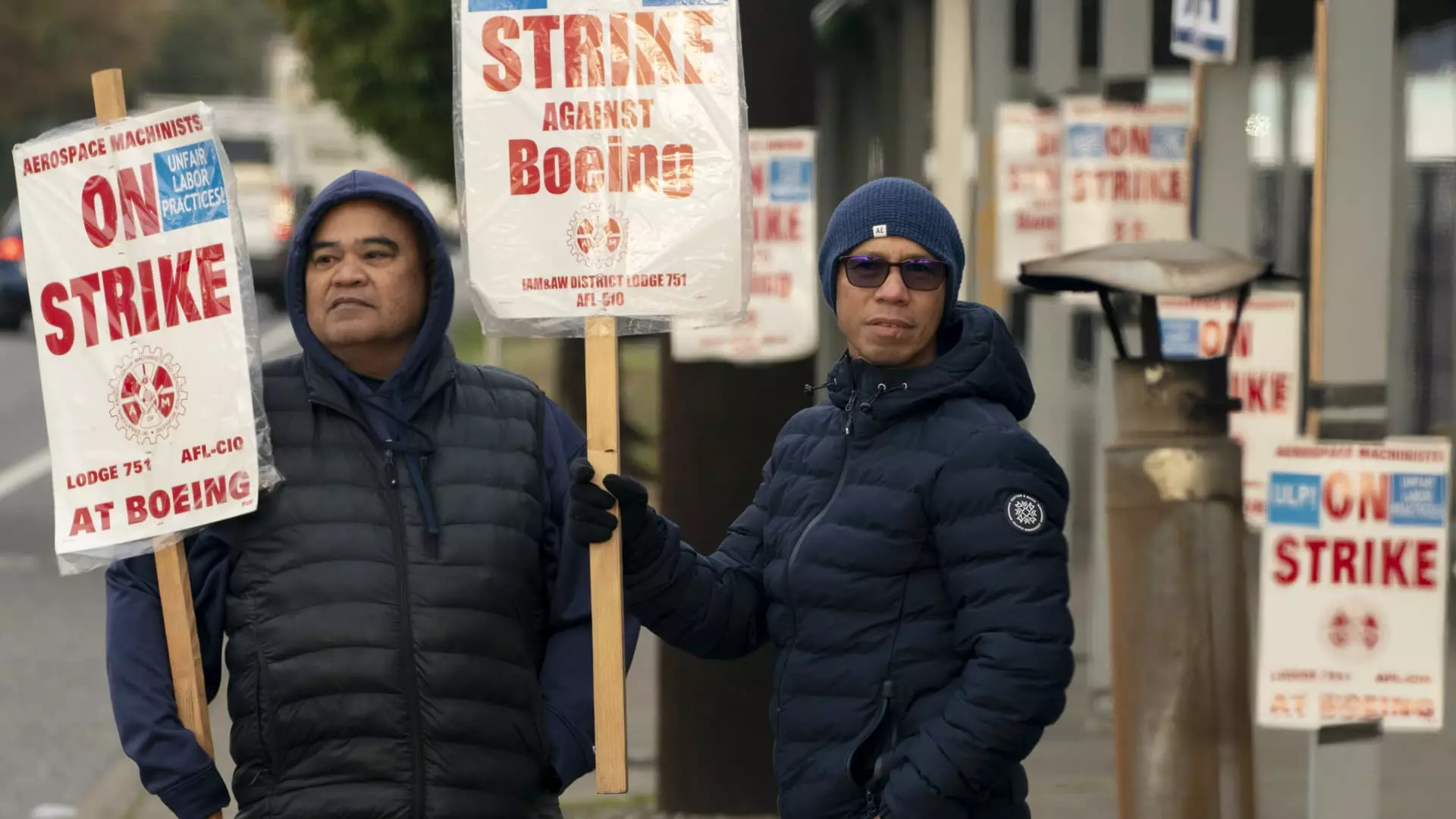The ongoing machinist strike at Boeing has brought significant attention to the complexities of the U.S. labor market as the nation approaches critical economic analyses and a pivotal presidential election. Lasting over seven weeks, this strike involves over 44,000 workers, with around 33,000 being Boeing’s machinists. The ramifications of this labor dispute not only stand to affect Boeing’s production and operational efficiency but also hold potential consequences for national employment statistics and broader economic conditions as the nation braces for an impending jobs report and Federal Reserve meeting.
This strike began on September 13, following a decisive vote against a union-supported labor agreement. The workers, primarily situated in the Seattle area, rejected a proposal that included a hefty wage increase of 35%, as they sought better compensation after years of stagnant growth. The strike marks a notable moment, being the first of its kind since 2008, and reflects deeper issues within the aerospace industry’s labor dynamics. The situation at Boeing is exacerbated by the arrival of a new CEO, Kelly Ortberg, who is tasked with navigating the company through various crises—including safety and quality concerns—that have plagued the organization for years.
The looming October employment report is of particular interest, especially as it serves to inform both the upcoming presidential election and the Federal Reserve’s monetary policy meetings. Economists forecast a net increase of approximately 100,000 jobs, but this number is heavily influenced by the strike and other external factors, such as weather events that have disrupted labor. Bank of America has estimated that the strikes in conjunction with the impacts of Hurricane Helene and Hurricane Milton may collectively reduce payroll figures by at least 50,000 jobs, underscoring the immediate impact of labor disputes on the economic landscape.
Government officials have acknowledged this disruption, with Federal Reserve Governor Christopher Waller noting that the job losses stemming from the Boeing strike, while significant, may be temporary and not easily quantifiable in terms of visible effects on the unemployment rate. This insight reveals the struggles of accurately capturing the fluid dynamics of labor markets during tumultuous periods.
In tandem with the ongoing strike, Boeing has signaled intentions to cut approximately 10% of its global workforce, amounting to around 17,000 jobs, as part of a broader strategy to streamline operations. Ortberg’s assertion that “there’s just too much overhead” resonates with the need for efficiency in an incredibly competitive industry. The announcement of layoffs may have staggered effects on the employment landscape, complicating federal surveys aimed at assessing job statistics. Unlike strikes, which are visible and measurable, layoffs can occur in less predictable patterns, making it challenging for economists to gauge the full impact promptly.
The intricacies of this employment crisis can further extend into the supply chain, as companies like Spirit AeroSystems, a key supplier to Boeing, have started furloughing workers. With ongoing uncertainty in Boeing’s operational capacities, this cascading impact could lead to additional workforce reductions throughout the aerospace sector, affecting thousands of livelihoods beyond Boeing itself.
The Biden administration has stepped into the fray, advocating for negotiations between Boeing and its machinists in hopes of curbing further disruptions to the labor market. The Department of Labor, led by Acting Secretary Julie Su, has facilitated meetings between the two parties to address critical bargaining issues. This involvement signals the federal government’s recognition of the strike’s implications not only for Boeing but also for the broader U.S. economy.
Looking ahead, the situation remains fluid. The effect of the ongoing strike and subsequent layoffs on the national job market will likely take time to materialize fully. Although the immediate job losses may not reflect in October’s report as dramatically as initially anticipated, the Suzuki of Boeing’s corporate strategies and the aviation industry’s stability hinges on resolving these labor disputes amicably.
Boeing’s machinist strike represents more than just a labor dispute; it is a critical juncture that could reshape employment dynamics across the aerospace sector and the larger U.S. economy. With significant layoffs announced and the impact on job numbers expected to be felt in real time, understanding the implications of this conflict is crucial as stakeholders—including employees, policymakers, and economists—navigate an increasingly complex labor landscape. The outcome of the negotiations will determine not only the fate of Boeing’s workforce but may also serve as a bellwether for broader trends in labor relations, wage growth, and market resilience in the face of adversity.


Leave a Reply